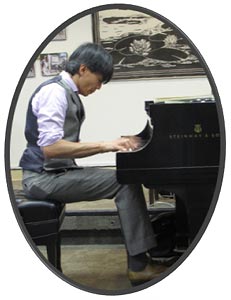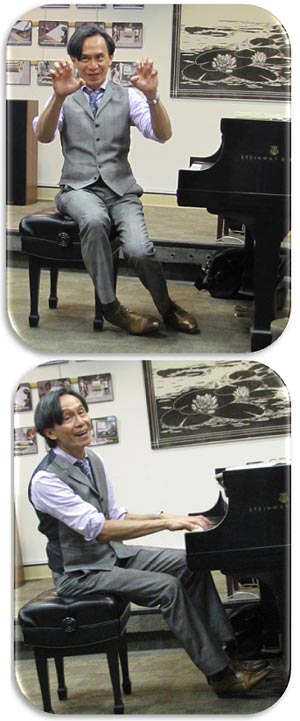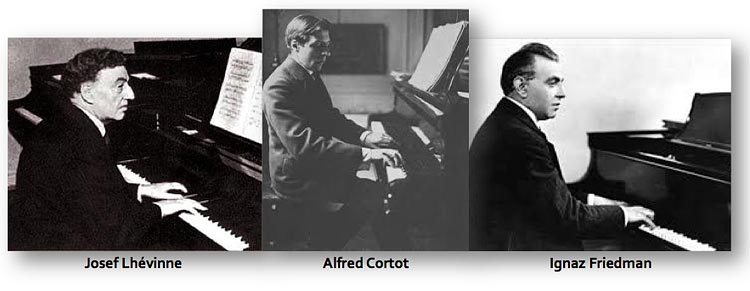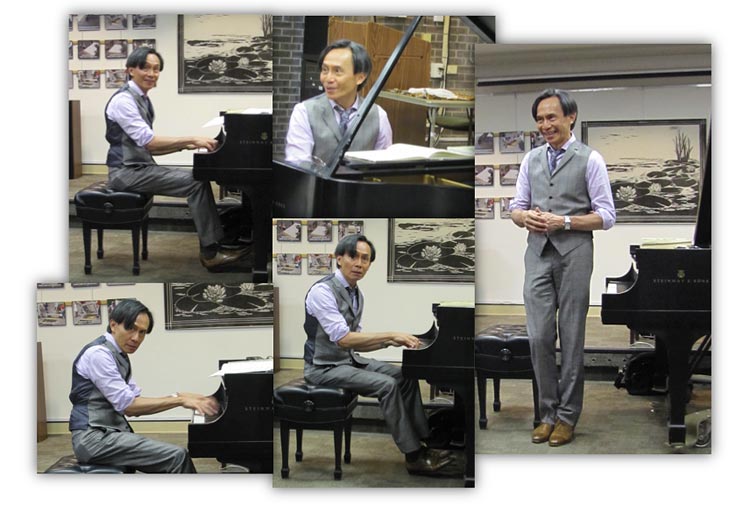Music Educators Association of New Jersey
Serving teachers and students since 1927



Professor Eduardus Halim declared: "Chopin revolutionized the way a pianist regards his instrument. He transformed the étude form into a work of art." To demonstrate the art, Eduardus played excerpts from the études, adding insightful comments. He projected the beautifully shaped melodic lines with singing tones; his rapid playing was dazzling.


To Professor Halim, "playing the notes is only the first step in mastering a Chopin étude." Each study requires a certain set of pianistic and interpretive skills. Producing a singing tone and playing legato (required in most of the études) are paramount. Professor Halim regarded the works of Opus 10 and Opus 25 as "a cycle of études," and recommended that when learning one particular étude, also explore the études preceding and following it.

How important is the size of the hand? Professor Halim showed the rapt audience the cast models of the left hands of Frédéric Chopin and Franz Liszt, both legendary pianists. The latter model dwarfed the former; it was larger, broader, more bulky, and the wrist was correspondingly thicker. Sharing anecdotes from his teaching, Professor Halim said, "The hand itself does not determine sound. Sound is [determined by] how all components are used together. Independent, strong fingers and a flexible wrist are more important than hand size." Projecting and shaping melodies and controlling dynamics of secondary tones require independent fingers. A supple wrist enables the pianist to traverse the keys without undue strain the forearm must be mobile to pull the hand along the keyboard.

No single hand position will serve as the universal efficient one. Citing Jean-Jacques Eigeldinger's excellent book, Chopin: pianist and teacher as seen by his pupils, our speaker said that Chopin would begin scale study with B Major, because the required hand position is natural, in comparison to that of the most difficult, C Major. Rather than maintaining fingers in a restrictive, claw-like shape, Eduardus Halim prefers a supple approach, moving out from the keys and inward when needed. One should choose the curvature that best produces the sound sought. Flattened fingers, in greater contact with the keys, can produce a singing tone.
Finally, the essential pedal becomes a dangerous device if used with abandon, "like singing in the shower," Eduardus Halim warned. He observes Chopin's pedal markings carefully, paying particular attention to their absence. He demonstrated that with careful pedaling, a melody will sound sempre legato even when played entirely with the fifth finger. Use both pedals to full advantage; alternating the depression of both damper and una corda pedals creates limitless possibilities.
In practicing, one must be able to differentiate between fatigue and strain. He advises students to begin working on small sections, and build carefully. He believes that slow practice is crucial to feeling secure, although he acknowledges that there are some excellent pianists who would disagree.
After revealing that he had barely played thirds in his early years of lessons, Eduardus Halim played the Josef Lhévinne recording of the double third étude, and stunning recordings of other Chopin études by Alfred Cortot and Ignaz Friedman. He added that learning any Study on a Chopin Etude by Leopold Godowsky is great preparation for playing other romantic music. "Godowsky was a serious transcriber." The speaker then showed us a facsimile of Chopin's Op. 10 No. 3 and some volumes of Godowsky's transcriptions, which were then circulated through the audience.

Demonstrations followed. Opus 10 No. 1 in C Major is treacherous, particularly the section involving chords with two or more black keys. In this situation, move in and out so that the fingers do not remain curved. Opus 10 No. 2 in A Minor is a nightmarish chromatic challenge involving right hand 4th and 5th fingers crawling up and down the keyboard above dyads played by the thumb and 2nd finger. Eduardus Halim commented that achieving finger independence, particularly of the 4th and 5th, is addressed by Chopin throughout the two volumes. In the octave study, Op. 25 No. 10 in C Minor, these fingers must play legato. The motion should create a sense of gliding over the keys, not of repeated hammering by the arms, something that would be stressful and produce an ugly tone. In Op. 10 No. 4 in C Sharp Minor, close finger work and crisp chords are the challenge. Op. 10 No. 5 in G Flat Major ("Black Key") the thumbs must play on black keys, and the very active right hand is pitted against a bouncing but articulate left. This was sparkling! Then we heard the gossamer sound of Op. 25 No. 1 in A Flat Major ("Aeolian Harp") with the singing top voice and supportive bass.

Eduardus Halim closed with a memorable performance of the eloquent Opus 25 No. 7 in C Sharp Minor ("Cello"). The enthusiasm and warmth of the speaker and the content of his performance and lecture were very inspiring.

Eduardus Halim, pianist, has enjoyed a distinguished international career as soloist in recital and with orchestras. He is currently teaching at N.Y.U. He began lessons at age six and made his recital debut at age 13. On full scholarship at Juilliard, he studied with Sascha Gorodnitski and Rudolf Firkusny. He later became Horowitz's last student, studying with him for a year. For more information see http://steinhardt.nyu.edu/faculty/Eduardus_Halim
Bertha Mandel, writer
Nancy Modell, photographs and layout